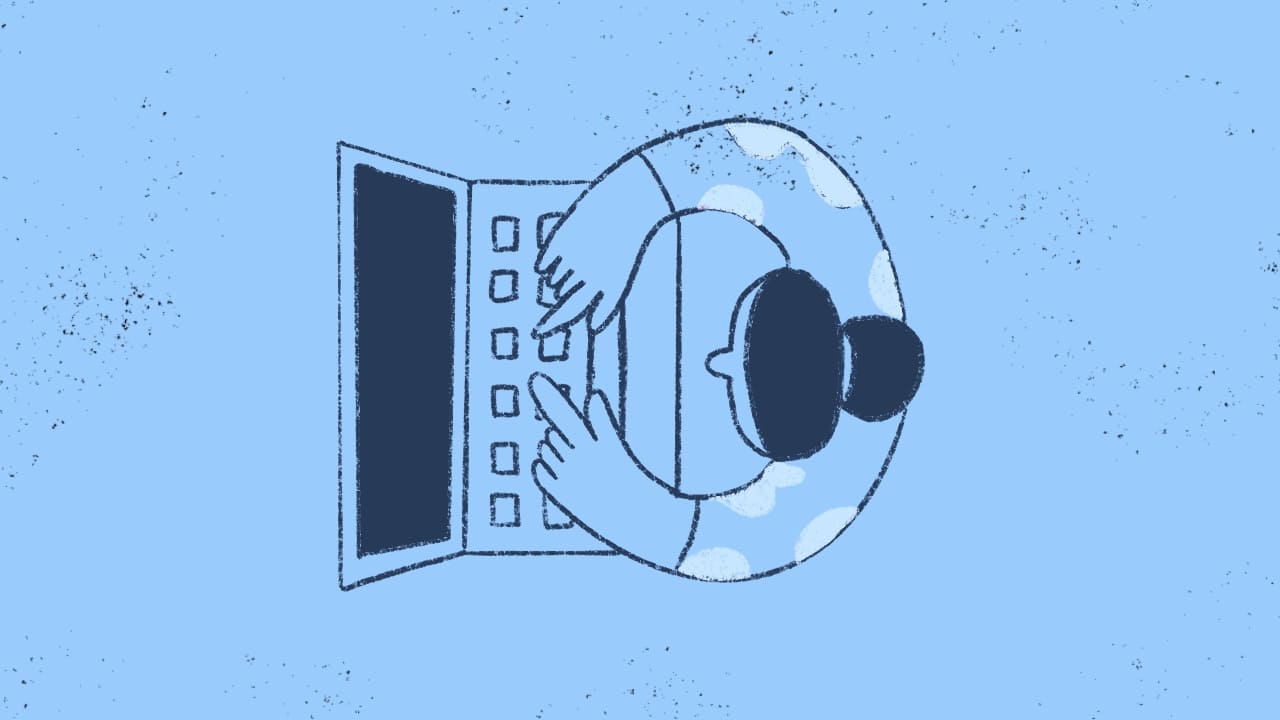Managing change effectively is crucial for organizations aiming to thrive. This is where the Change Advisory Board (CAB) comes into play, acting as the guiding force in the Change Management process.
Imagine a team of experts who assess, evaluate, and approve changes, ensuring that everything runs smoothly while minimizing disruptions. Sounds like a great squad, right? Well, that's precisely what a CAB is!
In this article, we'll explore the ins and outs of the Change Advisory Board, its importance, roles, best practices, and how to run an effective CAB meeting in 2024.
So, let's dive into the world of Change Management!
What is a Change Advisory Board?
A Change Advisory Board is a formal group within an organization that plays a pivotal role in the Change Management process. Its primary function is to evaluate proposed changes to the IT infrastructure, systems, or business processes, ensuring that these changes are implemented in a controlled and systematic manner.
Typically composed of key stakeholders, subject matter experts, and representatives from various departments, the CAB collaborates to review change requests. They assess the potential impact of these changes on the organization and make informed decisions regarding their approval, prioritization, or rejection.
The CAB acts as a gatekeeper, ensuring that changes align with the organization's goals while minimizing risks associated with service disruptions.
By providing a structured framework for evaluating changes, the CAB enhances the organization's ability to adapt and evolve in response to dynamic business needs.

Do We Still Need the Change Advisory Board? 15+ Industry Leaders Weigh In
Where does the CAB fit in the Change Management process?
Before diving into the CAB, it's important to understand its place within the Change Management process.
Change Management is a structured approach to implementing organizational changes while minimizing disruptions. And the Change Management process refers to the series of steps and activities designed to manage and control changes within an organization, ensuring that changes are systematically reviewed, tested, and approved before implementation.
In IT Service Management (ITSM), Change Management teams plays a key role in handling changes to IT systems, services, or infrastructure, ensuring that these changes do not negatively impact the overall service delivery.
Within ITSM, the CAB is a vital component. They ensure that potential risks are evaluated and mitigated, and that all relevant business functions are aligned with the proposed changes.
Key components of a CAB
-
Diverse perspectives: The CAB includes members from different departments, bringing various viewpoints to the table. This diversity fosters comprehensive evaluations of proposed changes.
-
Structured decision-making: The CAB establishes a standardized process for assessing change requests, ensuring consistency in decision-making.
-
Risk Management: One of the CAB's primary responsibilities is to identify and mitigate potential risks associated with changes, safeguarding the organization’s operations.

6 Tips on How to Run Your CAB Like A Boss
Why is a Change Advisory Board important?
The importance of a Change Advisory Board cannot be overstated. It serves as a linchpin in the Change Management process, providing several key benefits that contribute to organizational success.
1) Risk mitigation
The CAB plays a critical role in assessing the risks associated with proposed changes. By systematically evaluating these risks, the CAB helps prevent potential disruptions to business operations. This proactive approach ensures that changes are introduced in a controlled manner, minimizing the likelihood of negative impacts on service delivery.
2) Stakeholder collaboration
A CAB brings together a diverse group of stakeholders, including IT professionals, business leaders, and subject matter experts. This collaborative environment allows for a thorough examination of changes from multiple perspectives, incorporating valuable insights that enhance the decision-making process.
3) Consistency in decision-making
Establishing a standardized decision-making process is essential for ensuring that changes align with organizational objectives.
The CAB provides a framework for evaluating change requests consistently, which is crucial for maintaining stability and reliability in the organization’s operations.
Types of Change Advisory Boards
Change Advisory Boards can take various forms depending on the organization's size, structure, and needs. Here are a few common types.
1. Standard Change Advisory Board
This is the most common type, consisting of representatives from various departments, including IT, operations, and security. It focuses on evaluating standard change requests and ensuring compliance with policies.
2. Emergency Change Advisory Board
This type is convened quickly to assess urgent changes that need immediate approval, such as critical system updates or security patches. The members are typically key stakeholders who can make quick decisions.
3. Project Change Advisory Board
Formed for specific projects, this CAB includes members relevant to the project at hand. It focuses on changes that may impact the project's timeline, budget, or scope.

A Deep Dive Into the Emergency Change Control Process
Members of the Change Advisory Board
The effectiveness of a Change Advisory Board largely depends on its composition. Here are some typical key roles a CAB requires:
-
Chief Information Officer (CIO): The CIO oversees the organization's IT strategy and ensures that changes align with business objectives.
-
Chief Information Security Officer (CISO): The CISO focuses on the security implications of changes, ensuring that new implementations do not introduce vulnerabilities.
- Change Manager: A Change Manager is responsible for overseeing and coordinating all aspects of the Change Management process. Their role is to ensure that all changes are efficiently planned, implemented, and reviewed to minimize disruption to services and operations.
-
IT Operations Manager: This member assesses the operational impact of changes and ensures that processes are in place to manage them effectively.
-
Project Manager: Responsible for specific projects, the project manager ensures that changes align with project timelines and deliverables.
-
Business Relationship Manager: Business Relationship Managers bridges the gap between IT and business functions, ensuring that the IT services provided are in line with business requirements.
-
Business Unit Representatives: Members from different business units provide insights on how changes affect their operations, helping ensure that all perspectives are considered.
-
Quality Assurance Lead: This role evaluates changes from a quality standpoint, ensuring that they meet the organization's standards before implementation.
Each of these members plays a crucial role in assessing and approving changes, ensuring that the organization's IT environment remains stable and secure while supporting business needs.

What is a Change Manager? Responsibilities And Skills
5 best practices for an effective Change Advisory Board
To maximize the effectiveness of a Change Advisory Board, organizations should adopt best practices that enhance collaboration, communication, and decision-making.
1. Clearly define roles and responsibilities
Establishing clear roles and responsibilities for CAB members is essential. This clarity ensures that everyone understands their contributions to the Change Management process and fosters accountability.
2. Select the right CAB members
Choosing the right individuals to serve on the CAB is crucial. Members should possess diverse expertise and insights relevant to the organization’s operations. This diversity enhances the CAB’s ability to evaluate changes comprehensively.
3. Streamline CAB meetings
Efficiently managing CAB meetings is vital for productivity. Preparing a structured agenda, setting clear objectives, and ensuring that meetings are focused and time-bound can significantly improve the effectiveness of discussions.
4. Embrace continuous improvement
Regularly reviewing and refining CAB processes is essential for adapting to new challenges and changes in organizational strategy. Continuous improvement helps the CAB remain agile and responsive to emerging needs.
5. Utilize technology
Leveraging technology can enhance the CAB's efficiency. Utilizing Change Management tools and collaboration platforms streamlines documentation, communication, and follow-up tasks, especially in hybrid or remote settings.

How to run a Change Advisory Board meeting in 2024?
Running an effective CAB meeting requires careful planning and execution. Here are some steps to ensure successful CAB meetings in 2024:
1. Prepare a structured agenda
A well-defined agenda is the backbone of an effective CAB meeting. It should outline the topics to be discussed, including:
- Review of outstanding and completed changes.
- Discussion of new proposals.
- Evaluation of emergency changes.
2. Foster open communication
Encouraging open communication among CAB members is critical. This environment allows for diverse perspectives to be shared, leading to more informed decision-making. Consider using collaborative tools that facilitate real-time communication and document sharing.
3. Document meeting outcomes
Accurate documentation of meeting outcomes is essential for accountability. Ensure that decisions made during the meeting are recorded and communicated to relevant stakeholders promptly. This transparency helps maintain trust and clarity in the Change Management process.
4. Follow up on action items
After the meeting, it’s crucial to follow up on action items assigned to CAB members. Regular check-ins can help ensure that tasks are completed and that the Change Management process remains on track.
Leveraging Change Management software: What to look for
Change Management software is designed to automate and streamline the process of planning, approving, implementing, and reviewing changes within an organization. This type of software helps centralize the documentation and management of changes, ensuring that all relevant stakeholders are informed and involved in the process.
It typically includes features like automated workflows, change tracking, risk assessment, and audit trails, which help organizations ensure compliance and reduce the likelihood of errors during change implementation.
An effective Change Management solution should allow you to create change requests, automate the approval process, track the lifecycle of changes, and provide real-time reporting on the status and impact of changes. Additionally, it should integrate with other ITSM tools to provide a seamless experience for managing changes across the IT landscape.

A Complete Guide to Change Management Software + Top Picks
InvGate Service Management as your Change Management software

InvGate Service Management is an ideal tool for managing changes efficiently and effectively. Its robust features make it an excellent choice for implementing Change Management practices.
InvGate Service Management 7 is certified by PeopleCert in five practices:
- Incident Management.
- Service Request Management.
- Problem Management.
- Change Enablement.
- Knowledge Management.
These certifications ensure that the platform adheres to best practices, making it a reliable solution for managing complex IT changes.
Additionally, InvGate Service Management is certified by PINK in six processes:
- Change Management.
- Incident Management.
- IT Operations Management.
- Knowledge Management.
- Problem Management.
- Request Management.
These certifications demonstrate the platform’s comprehensive approach to managing not just changes but the broader spectrum of IT service operations, making it a powerful tool for IT organizations looking to streamline their change processes.
Conclusion
The Change Advisory Board is a vital component of effective Change Management within organizations. By assessing proposed changes, mitigating risks, and fostering collaboration among stakeholders, the CAB plays a crucial role in ensuring that changes are implemented smoothly and with minimal disruption.
By adopting best practices and leveraging technology, organizations can enhance the effectiveness of their CABs, ultimately leading to more successful change initiatives. As we move into 2024, it’s essential for organizations to refine their CAB processes, ensuring that they remain agile and responsive to the ever-evolving business landscape.
Frequently Asked Questions (FAQs)
1) What is the primary role of a Change Advisory Board?
The primary role of a Change Advisory Board (CAB) is to assess, evaluate, and approve proposed changes to an organization’s IT infrastructure, systems, or business processes, ensuring that changes are implemented in a controlled manner.
2) How does a CAB mitigate risks associated with changes?
A CAB mitigates risks by systematically evaluating proposed changes, identifying potential issues, and ensuring that appropriate measures are in place to minimize disruptions to business operations.
3) Who typically serves on a Change Advisory Board?
CAB members typically include key stakeholders, subject matter experts, and representatives from various departments within the organization, ensuring a diverse range of perspectives in the decision-making process.
4) What are some best practices for running effective CAB meetings?
Best practices for effective CAB meetings include preparing a structured agenda, fostering open communication, documenting meeting outcomes, and following up on action items assigned to CAB members.















